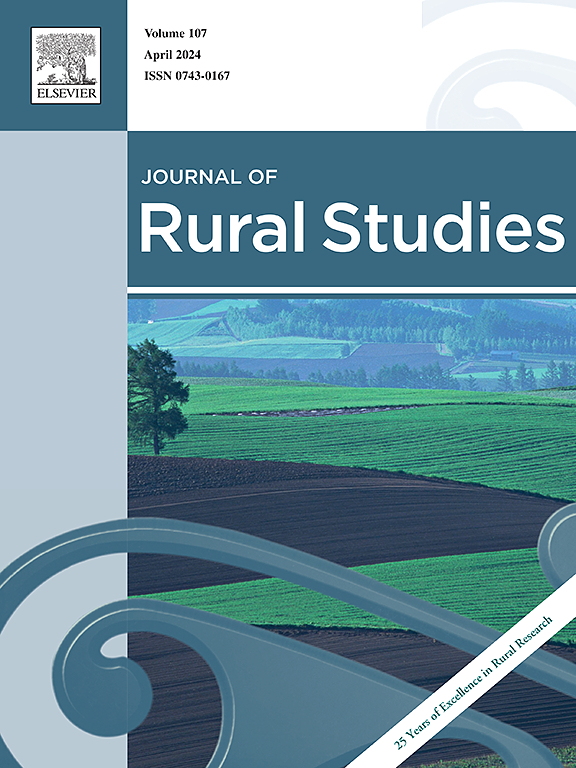Understanding the transition process and dynamic mechanism of farmland use functions: A comparative analysis from Eastern and Western China
IF 5.1
1区 社会学
Q1 GEOGRAPHY
引用次数: 0
Abstract
The multifunctional utilization of farmland is critical for food security, socioeconomic stability, and ecological sustainability, and understanding its characteristics and driving mechanisms is important for promoting the efficient use of farmland and achieving harmonious development between human and land. However, comparative analyses across differing regions are lacking, which makes it difficult to comprehend developmental differences among regions and coordinate the use of farmland resources. Case studies were conducted in Xianju County (developed eastern region) and Shidian County (less-developed western region), China. The comprehensive function score was calculated using the Technique for Order of Preference by Similarity to Ideal Solution method, characteristics and mechanisms driving the functional transformation of farmland use from 2000 to 2020 were compared and developmental strategies for the two regions proposed. There was evident significant heterogeneity in the multifunctional transformation of farmland use between the two counties. Shidian County experienced three transformation stages: mild degeneration, fluctuating development, and rapid improvement, while Xianju County progressed through stages of mild degeneration, rapid improvement, and differentiated development. The demands of social development, constraints on resource endowments, impetus of diverse stakeholder behaviors, and the regulation of policy and institutional frameworks jointly drove the transformation of farmland use. The gap between the two regions can be narrowed by implementing measures to fully exploit the potential of resources, which would contribute to the nation's common prosperity. This study provides new insights and theoretical support for narrowing regional disparities in farmland benefits and promoting efficient land use, thereby offering a scientific reference for regional collaborative development.
农地利用功能变迁过程与动力机制——以东西部地区为例
农地多功能利用是保障粮食安全、社会经济稳定和生态可持续发展的关键,了解农地多功能利用特征及其驱动机制对促进农地高效利用、实现人地和谐发展具有重要意义。然而,由于缺乏跨区域的比较分析,难以理解区域间的发展差异和协调农田资源的利用。以中国东部发达地区仙居县和西部欠发达地区石店县为例进行了案例研究。采用与理想解相似的偏好排序法计算综合功能得分,比较了2000 - 2020年两区耕地利用功能转变的特征和驱动机制,提出了两区耕地利用功能转变的发展策略。两县农地多功能转化存在显著的异质性。石店县经历了轻度退化、波动发展和快速改善三个转型阶段,仙居县经历了轻度退化、快速改善和差异化发展阶段。社会发展的需求、资源禀赋的制约、多元利益相关者行为的推动以及政策和制度框架的规制共同推动了农地利用方式的转变。通过实施充分开发资源潜力的措施,可以缩小两个地区之间的差距,这将有助于国家的共同繁荣。本研究为缩小区域耕地效益差异、促进土地高效利用提供了新的见解和理论支持,为区域协同发展提供了科学参考。
本文章由计算机程序翻译,如有差异,请以英文原文为准。
求助全文
约1分钟内获得全文
求助全文
来源期刊

Journal of Rural Studies
Multiple-
CiteScore
9.80
自引率
9.80%
发文量
286
期刊介绍:
The Journal of Rural Studies publishes research articles relating to such rural issues as society, demography, housing, employment, transport, services, land-use, recreation, agriculture and conservation. The focus is on those areas encompassing extensive land-use, with small-scale and diffuse settlement patterns and communities linked into the surrounding landscape and milieux. Particular emphasis will be given to aspects of planning policy and management. The journal is international and interdisciplinary in scope and content.
 求助内容:
求助内容: 应助结果提醒方式:
应助结果提醒方式:


